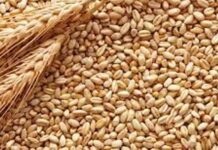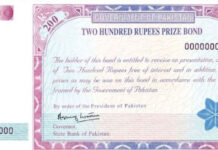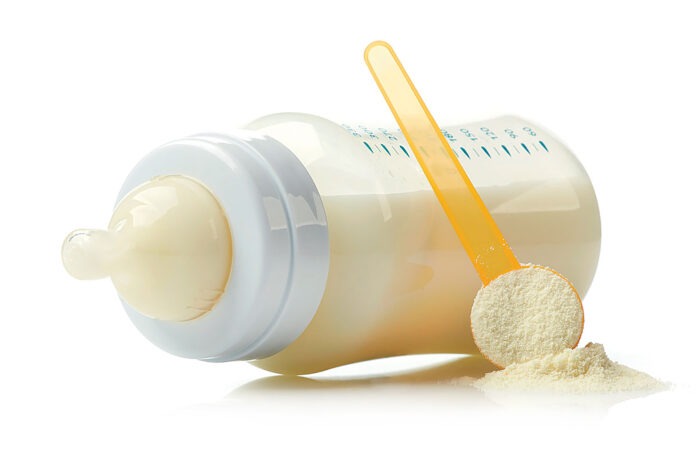In March last year, a press release by ICI Pakistan marked what could be a big change in the infant formula milk market in Pakistan. ICI Pakistan was buying the controlling share in NutriCo Morinaga Pvt. Ltd, the company that owns and distributes the Japanese Morinaga infant formula.
The acquisition affects the lives of millions of women who are young mothers and mothers-to-be because of how critical the product that Morinaga produces has become. Now, barely a year after ICI’s acquisition, the Japanese parent company and milk moguls Morinaga Milk Industry Co are looking to buy a 33% stake in the ICI subsidiary for a whopping $56 million.
The infant formula business is a big one. Globally, it has been estimated to be worth around $12 billion, and a lot of this success comes from sales of infant formula in third world developing countries such as Pakistan. The history behind infant formula in Pakistan and the ownership of Morinaga is a fascinating one. But to understand it completely, and the hold that products like Morinaga Infant Formula have in countries like Pakistan, it is important to go back and look at the history of infant formula and how we got here.
How important is formula?
There is a time, right after a baby is born, known as the ‘golden hour.’ Medical professionals have termed this a crucial one-hour window right after birth in which it is vital for the new-born baby to have uninterrupted skin-to-skin contact with their mother.
Freshly delivered, the child has just had a major change of environment. After spending nine months in the womb, they are acclimatising to the air, sights, and sounds that are suddenly all around them. The one hour of skin-to-skin contact helps the child establish an immediate relationship with its surroundings. While the baby’s temperature and respiration are adjusting to the world outside the womb, the skin-to-skin contact during the golden hour also helps the mother’s body ‘let down’ the milk, and the baby to search for and latch to its food supply.
There are, however, scenarios in which the golden hour does not go as planned. Childbirth is chaotic and at times debilitating for mothers. In a country such as Pakistan, where little attention is paid to female reproductive health. When mothers die in childbirth, or when children are premature and require immediate NICU attention, or when they are born through C-sections rather than natural births the golden hour can be interrupted.
According to an article published in 2020 in the UK-based open-source journal Reproductive Health, Pakistan has among the poorest pregnancy outcomes worldwide, significantly worse than many other low-resource countries.The Maternal Mortality Rate in Pakistan was 319 per 100,000 live births compared to an average of 124 in the other sites. Pakistan also has around 22% C-sections, and pre-term and low birthweight rates were also substantially higher than the other sites combined.
All of these are scenarios in which that vital ‘golden hour’ connection between mother and child cannot be established. And since children need immediate sustenance after birth, the solution often provided is infant formula milk.
Childbirth, of course, has been around since the existence of human life, and instant formula was not invented until as recently as the middle of the 19th century. Up until then, wet-nurses were a common substitute for situations in which the mother could not feed her child.
{Note from the editorial staff: Wet-nursing as a profession has thrived since the dawn of civilization and the appearance of class structures. Cross-nursing as a concept still exists, but other than in very rural areas the profession of ‘wet-nursing’ has dwindled out. Historically, it was an established business. It has been referred to regularly in literature. Juliet from the Bard’s Romeo and Juliet is accompanied often by her nurse, and Patrick Suskind’s 1985 novel ‘Perfume’ also features prominently the role and politics of the wet-nurse profession in mid-19th century Europe, which was right before infant formula was invented.}
In 1865, chemist Justus von Liebig developed, patented, and marketed an infant food, first in a liquid form and then in a powdered form for better preservation. Liebig’s formula—consisting of cow’s milk, wheat and malt flour, and potassium bicarbonate—was considered the perfect infant food.
After the turn of the century and after the second world war, infant formula was marketed as a necessity. Mothers were told it provided extra nutrients and was healthier than breast milk, on top of which manufacturers also exploited the lack of maternity leave by convincing women they could return to work early after giving birth because their children could be given formula.
Medical professionals have disagreed on the merits of breastfeeding versus formula. Currently, the general consensus is that breastfeeding is the better option when the mother is healthy and able, but that infant formula is a vital invention that has saved many lives and made parenting easier for money. However, the history of how infant formula has been marketed is well recorded.
A 1981 article in the New York Times (NYT) titled ‘The controversy over infant formula’ explains in depth the prevailing opinions of that era over infant formula, and how poverty was leading a lot of third-world families to prefer formula over breastfeeding because malnourished mothers in developing countries could not produce milk. Business Insider, in a recent article titled ‘Every Parent Should Know The Scandalous History Of Infant Formula’ also shed light on how infant formula became a necessity through exploitation.
In, perhaps, one of the scariest instances of aggressive marketing, the earlier mentioned NYT article elaborates on how many companies employed ”mothercraft” nurses, most of whom wore white uniforms, who visited women in maternity wards and in their homes. As they helped mothers to cope with infant-rearing problems, many of the nurses also promoted their company’s formula. Dressed in traditional nurses’ uniforms, they conveyed the false impression that independent health professionals – not company employees – were recommending formula feeding. The major companies finally responded to harsh criticism of these practices by eliminating first the uniforms and then the nurses who had worn them. Many of these nurses were not even actual nurses, and only dressed as such.
Largely, the agreement on infant formula has been that it was an incredible concoction that has saved many lives. However, its corporate picture has not always been a very pretty one, particularly for the developing world.
Pakistan’s history with infant formula
For parents whose children were born in and raised from the 1980s and beyond, they will remember giving Meiji, if not Mead Johnson, and later, perhaps, Millac as well, to their infants and toddlers, with their best interests at heart. The first import of infant formula that became popular in Pakistan came in around 1979, when Unibrands launched Morinaga Infant Formula in Pakistan.
Unibrands was a wholly-owned subsidiary of pharmaceutical company Searle, and was founded by Ahmad Manzoor, whose son Shamoon now owns and runs fashion retail company Khaadi. In 1979, the earlier mentioned global push convincing mothers that formula was better for their children was at its peak. Morinaga was a high-quality Japanese product of the Japanese milk giant Morinaga Milk.
Unibrands under Manzoor signed a joint venture with Morinaga Milk to provide infant formula in Pakistan, and the venture gave birth to NutriCo Morinaga Pvt. Ltd. This company operated for decades successfully, and Morinaga’s BF-1 became the go-to formula given by doctors and taken by mothers for infants that needed it. According to sources, this was one of the first, if not the first, business to establish the import and distribution of quality infant & growing up formula in the country.
At the same time, the industry grew and new players entered the market. Currently, some of the top and/or easily available brands of infant formula in the market include NanGrow, LactoGrow, Aptamil, Enfamil, Meiji, and Morinaga, in no particular order. Because of Pakistan’s large population, it became a major market for infant formula, particularly because it had a lot of mothers that were malnourished and could not produce a sufficient amount of milk.
During this time, Manzoor’s family found other avenues for their business. In 1988, his son Shamoon launched the wildly successful fashion retail brand Khaadi, and Manzoor had by now also diversified his business interests. In 2014, Unibrands accepted a bid from ICI Pakistan to acquire 40% stake in its infant formula business — NutriCo Morinaga Pvt. Ltd. At this point, it had been decided that ICI and Unibrand would run this business together to distribute infant formula.
Back then it was reported by ICI officials that Morinaga’s products, which target babies up to 12 weeks old, enjoy a market share of 35% to 38%. “Its immediate competitor is another Japanese company Meiji, which also has a market share of 35% to 40%. “It has a market worth of PKR 20 billion,” said an ICI official. “Around 60% of this demand is met through imports while the rest of the market is led by companies like Nestle.”
The ICI Pakistan board had approved an investment of PKR 960 million for a 40% stake in Nutrico Pakistan Morinaga. Thus, ICI and Unibrands began selling Morinaga Milk Japan’s product in Pakistan. The business proved to be a profitable one. At the time of the sale in 2014, Pakistan was spending over $165 million to import milk cream and milk food for infants, according to the Pakistan Bureau of Statistics (PBS).
In 2016, heartened by their decision, ICI announced they were setting up a facility at the cost of PKR 4.8 billion to manufacture Japan’s Morinaga infant formula in the country. In March 2021, according to the press release of April 27, 2021, ICI Pakistan announced that the NutriCo Morinaga business with Unibrands was going well. As a result, the board of directors approved a further 11% acquisition of shares in the subsidiary, which meant ICI Pakistan now controlled a 51% controlling share of NutriCo Morinaga, making Unibrands a silent shareholder in the business.
Earlier this month, a year after the acquisition, ICI received a conditional offer from Morinaga Milk Industry, Japan for the acquisition of an aggregate of approximately 33.3% of the issued and paid-up share capital of its subsidiary, NutriCo Morinaga (Pvt.) Ltd, against the value of $56 million, which translates to $2.07 per share.
So this means the infant formula industry is thriving, correct?
“Well, not really, not necessarily,” says one industry source on condition of anonymity. “Infant formula is not really a consumer good, per se; it’s more of a necessity item. Especially in cases of maternal mortality and malnutrition, and as supplementary nutrition for infants.”
There are legitimate conditions which necessitate the availability and dependence on infant formula, as we have already seen from the stories shared by our anonymous sources at the beginning of this story. But they make a valid case for the business of infant formula right off the bat, when they highlight that “When there is a legitimate need, there is bound to be a legitimate business. And if it works, it works.”
The CEO of a well-known brand of infant formula agrees with him, saying, “It’s the prerogative of a business whether they want to deal in Mercedez or Suzuki. Both will get you to your destination, but there are points to be considered when deciding the quality and potential of either one, and what a business decides is up to them.”
“But what any given infant formula business in the world will tell you is that any other animal’s milk is fit for that animal’s offspring, not for a human baby,” our first industry source elaborates. “It is very common in Pakistan, for instance, for parents to give their infants diluted cow’s or goat’s milk, but that can lead to malnutrition of the human baby, and is extremely dangerous. Which is why infant formula companies are in business. Diluting cow milk for the consumption of a human baby may dilute the renal solute load, but the practice also dilutes the protein, carbohydrates, fat, vitamins, and minerals, which defeats the purpose anyway. Not to mention that there is no guarantee that a human child will be able to easily digest animal milk. Hence the need to develop infant formula synthetically.”
However, it’s not like any regular business that one can set up upon a whim.
The importance of getting it right
The Codex Alimentarius Commission (CAC) is a 160+ member-countries body that develops food standards and guidelines (down to absolutely specific details, ranging from geographical differences, and socio-cultural practices and needs, right down to specific recipes for food items) for protecting consumer health, among other objectives. It is an international food standards body established in 1963 by the Food and Agriculture Organization (FOA) and the World Health Organization (WHO).
This body has more than 15 different committees that work in different areas, and Codex Committee on Nutrition and Foods for Special Dietary Uses (CCNFSDU) is the one that sets standards for infant formulas, follow-up formulas, and growing-up milks.
The Codex Standard on Infant Formula was developed in 1981 based on scientific knowledge available since the 1970’s, and is regularly revised. No infant formula or FUF (follow-up-formula for babies aged six to 12 months) can expect to do business in this field without the necessary approvals and certifications from these bodies.
“Infant formula is a scientific effort to replicate human breast milk as closely as possible, and infant formula businesses in the world today will never claim, or even agree, that infant formula is intended as an entire replacement for mother’s milk,” they emphasise. “Koi naim-ul-badal hai he nahin maan ke doodh ka.”
The industry may never thrive according to the same parameters as other consumer goods industries do, but it sure isn’t going anywhere any time soon.
“In fact, with the current dollar situation, the industry is in fact suffering, and so are the people, and this pertains not just to infant formula but also to products for mothers’ nutrition for when she’s expecting or lactating, which are already quite expensive, being heavily taxed,” the more senior corrects our assumption.
What can be said, though, is that it is a strongly knit and powerful industry, with backing from several global bodies such as UNICEF and WHO, involved in fields of public health, food and nutrition, and the like. An example of this is when the recent blanket ban on imports was imposed by the government, it ended up taking in its cruel embrace around eight to 10 raw materials which infant, follow-up, and growing-up formula depended on for their production – the senior tells us that the infant formula industry strongly advocated the need to lift the ban from those items, as they were an absolute necessity, and the government has exempted those raw materials from the bans.
























Thanks for the good information, I like it very much. Nothing is really impossible for you. your article is very good.
사설 카지노
j9korea.com